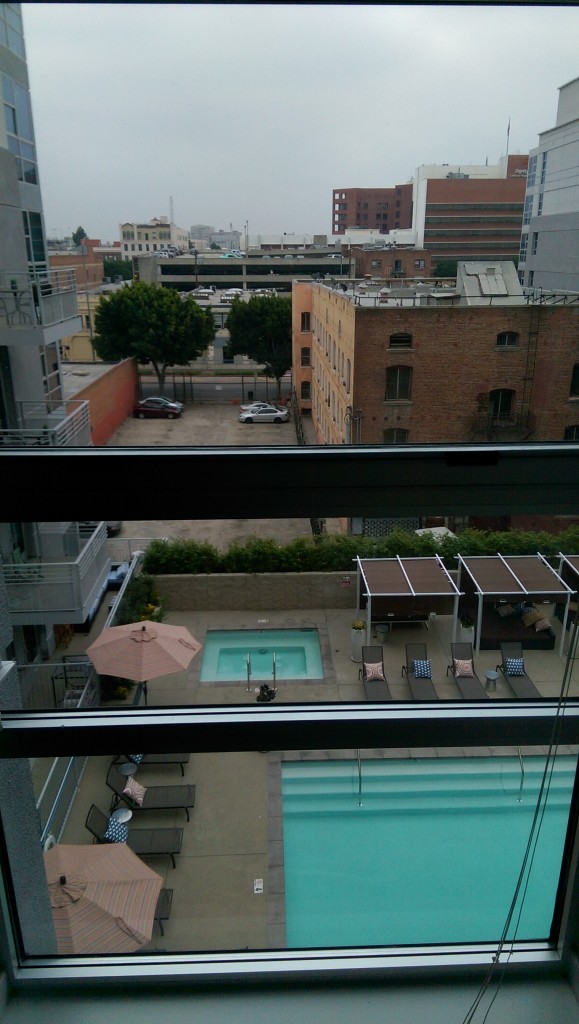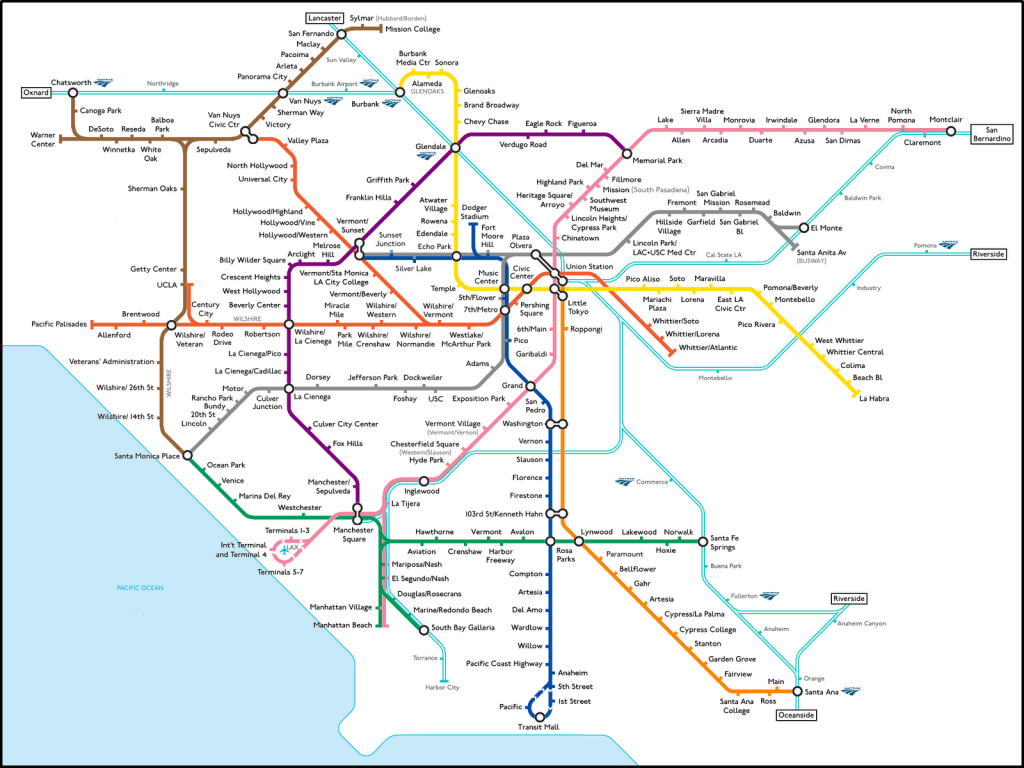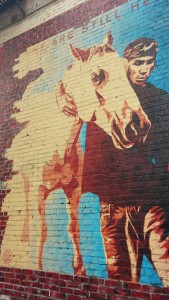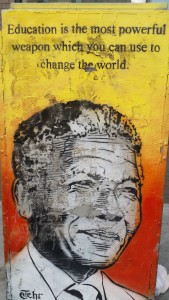I am currently sitting in the LAX airport waiting for my flight to San Jose, CA. Yesterday was our last day of work in downtown LA. We visited organizations that worked on rape in prisons, refugee and immigrant torture victims, community education and development, and violence prevention. Although these organizations did great work to help vulnerable populations, I was most impressed with our last stop of the day in Boyle Heights, where we met with local residents and leaders in the fight against the gentrification of their city. These residents/leaders were aware, educated, outspoken, passionate, and frustrated. I could tell that they were fed up with being constantly taken advantage of. They eagerly met with our group to share their life stories and share how their mere existence was a testament of their rebellion against structural violence. I understood their frustration with being exploited and not involved in community development projects.

Example of housing downtown LA near Staples Center
In all my MIIS classes, whenever we talk about development, we discuss the importance of involving stakeholders and we learn examples of state-sponsored projects coming in to develop various communities without their consent or input. It hit home for me last night that this disregard for human life via disregarding a community’s voice, occurs everywhere in the United States…and on a regular basis. Minority (non-white) populations are uprooted and pushed out of the way in the name of development. Their communities are replaced by housing or public spaces that benefit white populations. Although, this is not absolute, it happens regularly enough where I’m concerned and want to do something about it.
However, I am a graduate student about to graduate in May. I will be entering the job market with around $60,000 worth of debt and will be getting married in the Fall. I am planning on living in the Bay Area, but as I look for housing, I will be looking for affordable housing. Not surprisingly, my choices will be slim and I’ll choose the nicest and most affordable option I can find. This will mean I’ll be living in a diverse community, possibly a Latin American one due to the demographics in the Bay Area. Yesterday’s and this past week’s work in Boyle Heights and makes me wonder if I will be part of the gentrification problem since I will be moving into a lower income area. Soon I will rent in these areas, but soon I will most likely purchase a home. As a white male, will my economic decision displace a Latin American person or family and prevent a minority community from expanding and thriving?
My professor has a policy of owning who you are and being transparent about you as a person. This resonates with me because I wouldn’t be moving into to the areas in order to change them, but rather it will be an economic reason. I will be living in that community and will appreciate the diversity and uniqueness of it. To my credit, I won’t be moving in to change the neighborhood to reflect my interests and my values. However, what happens 10 years down the road when my wife and I have saved up to afford a home together? Will we stay in an underdeveloped area that might have higher crime rates and not as competitive/quality schools? If we do, we’ll advocate for better social services which will raise living expenses and displace those who cannot afford it. Assuming (making gross assumptions) that the minority community are still predominantly poor, they will be the ones displaced and I have gentrified them.
On the other hand, if my wife and I have enough money to move elsewhere for a better living area, we will most likely live in a predominantly white neighborhood, thereby isolating ourselves and living in an ignorant bubble. Neither of these options thrill me. Is it wrong to want the best for my future potential children? If I stay, I gentrify. If I move, I isolate myself and others. I’ll be thinking about this for a while to make sense of it, but feel free to comment if you have an opinion on this.
![IMG_2100[1]](http://sites.miis.edu/miisccsinla2015/files/2015/03/IMG_21001-300x225.jpg) the absence of color; it describes seeing color in a different palette. My brain and eyes work together to see a varying depth of color, from bold to muted. With automaticity, I perceive colors of objects and discriminate between the ones that intrigue me with their sharpness and ones that repel me. Some of my favorite colors are chocolate browns and deep purples or the color of blue when it resembles a robin’s egg. I abhor chartreuse and pale peach and cacophonies of color that overlap without matching.
the absence of color; it describes seeing color in a different palette. My brain and eyes work together to see a varying depth of color, from bold to muted. With automaticity, I perceive colors of objects and discriminate between the ones that intrigue me with their sharpness and ones that repel me. Some of my favorite colors are chocolate browns and deep purples or the color of blue when it resembles a robin’s egg. I abhor chartreuse and pale peach and cacophonies of color that overlap without matching.![IMG_2151[1]](http://sites.miis.edu/miisccsinla2015/files/2015/03/IMG_21511-300x225.jpg)


 ected crowded food desert that houses bad schools and out of touch teachers.
ected crowded food desert that houses bad schools and out of touch teachers.


